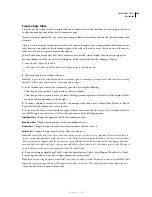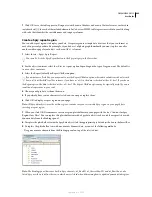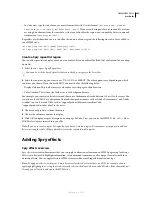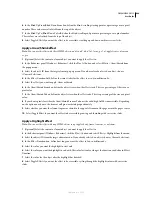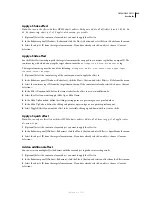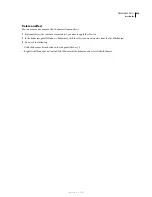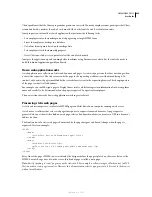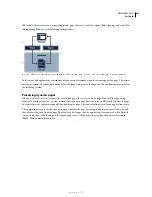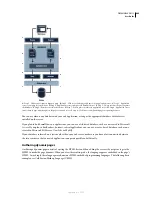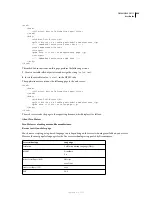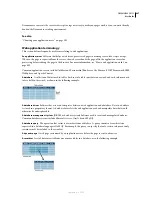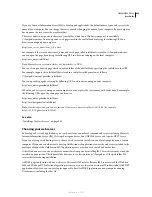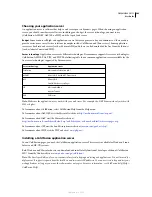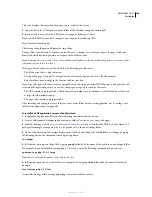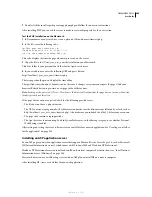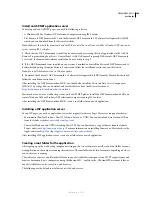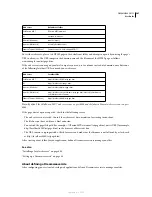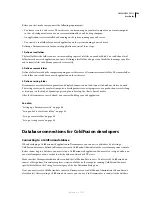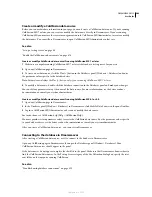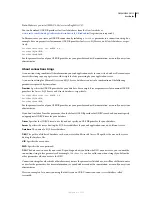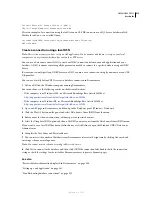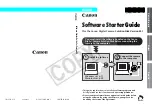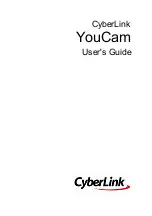
DREAMWEAVER CS3
User Guide
497
Dreamweaver can create the server-side scripts or tags necessary to make your pages work, or you can write them by
hand in the Dreamweaver coding environment.
See also
“Choosing your application server” on page 502
Web application terminology
This section defines frequently used terms relating to web applications.
An application server
Software that helps a web server process web pages containing server-side scripts or tags.
When such a page is requested from the server, the web server hands the page off to the application server for
processing before sending the page to the browser. For more information, see “How a web application works” on
page 492.
Common application servers include ColdFusion, Macromedia JRun Server, the Microsoft .NET Framework, IBM
WebSphere, and Apache Tomcat.
A database
A collection of data stored in tables. Each row of a table constitutes one record and each column consti-
tutes a field in the record, as shown in the following example:
A database driver
Software that acts as an interpreter between a web application and a database. Data in a database
is stored in a proprietary format. A database driver lets the web application read and manipulate data that would
otherwise be undecipherable.
A database management system
(DBMS, or database system) Software used to create and manipulate databases.
Common database systems include Microsoft Access, Oracle 9i, and MySQL.
A database query
The operation that extracts a recordset from a database. A query consists of search criteria
expressed in a database language called SQL. For example, the query can specify that only certain columns or only
certain records be included in the recordset.
A dynamic page
A web page customized by an application server before the page is sent to a browser.
A recordset
A set of data extracted from one or more tables in a database, as in the following example:
September 4, 2007


